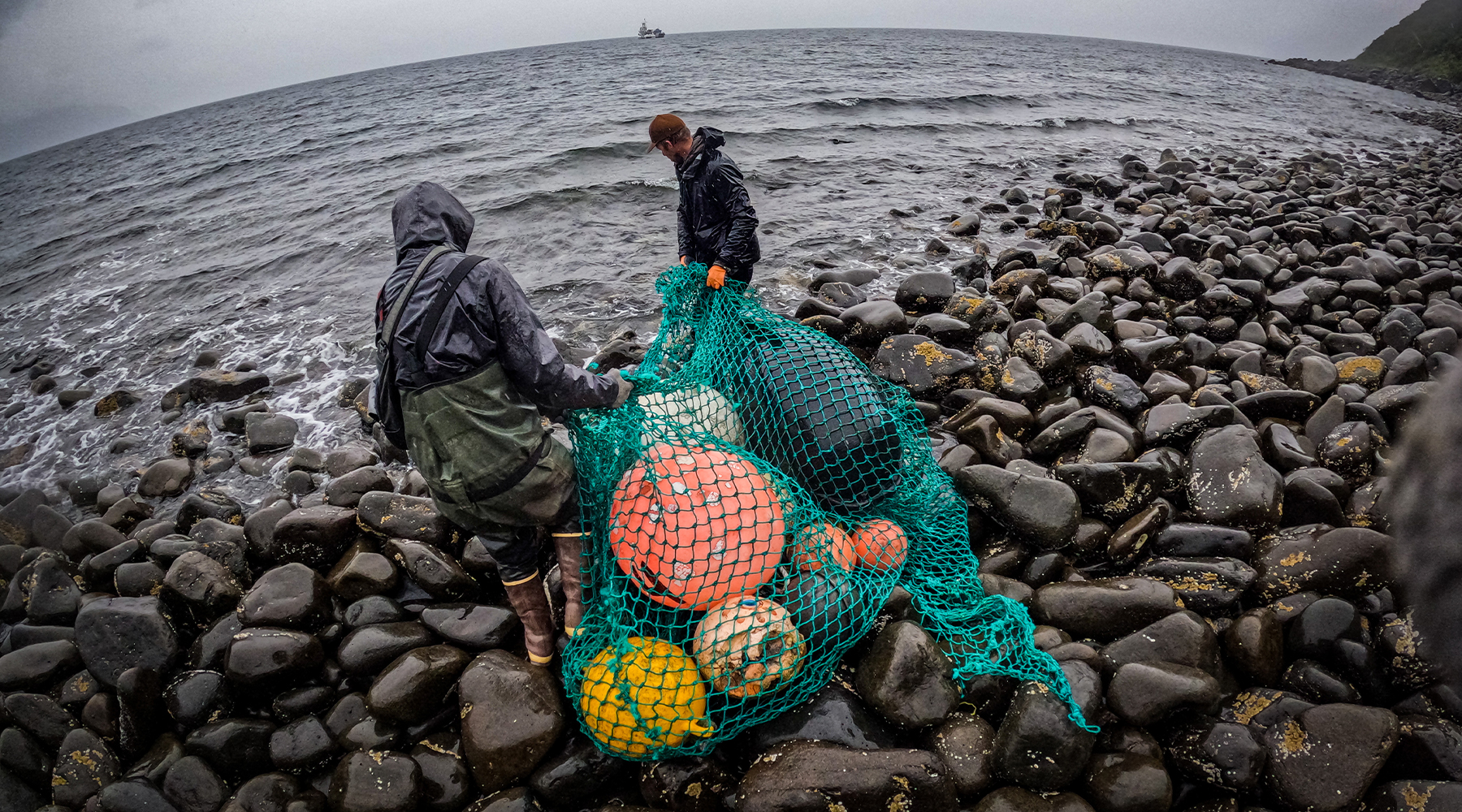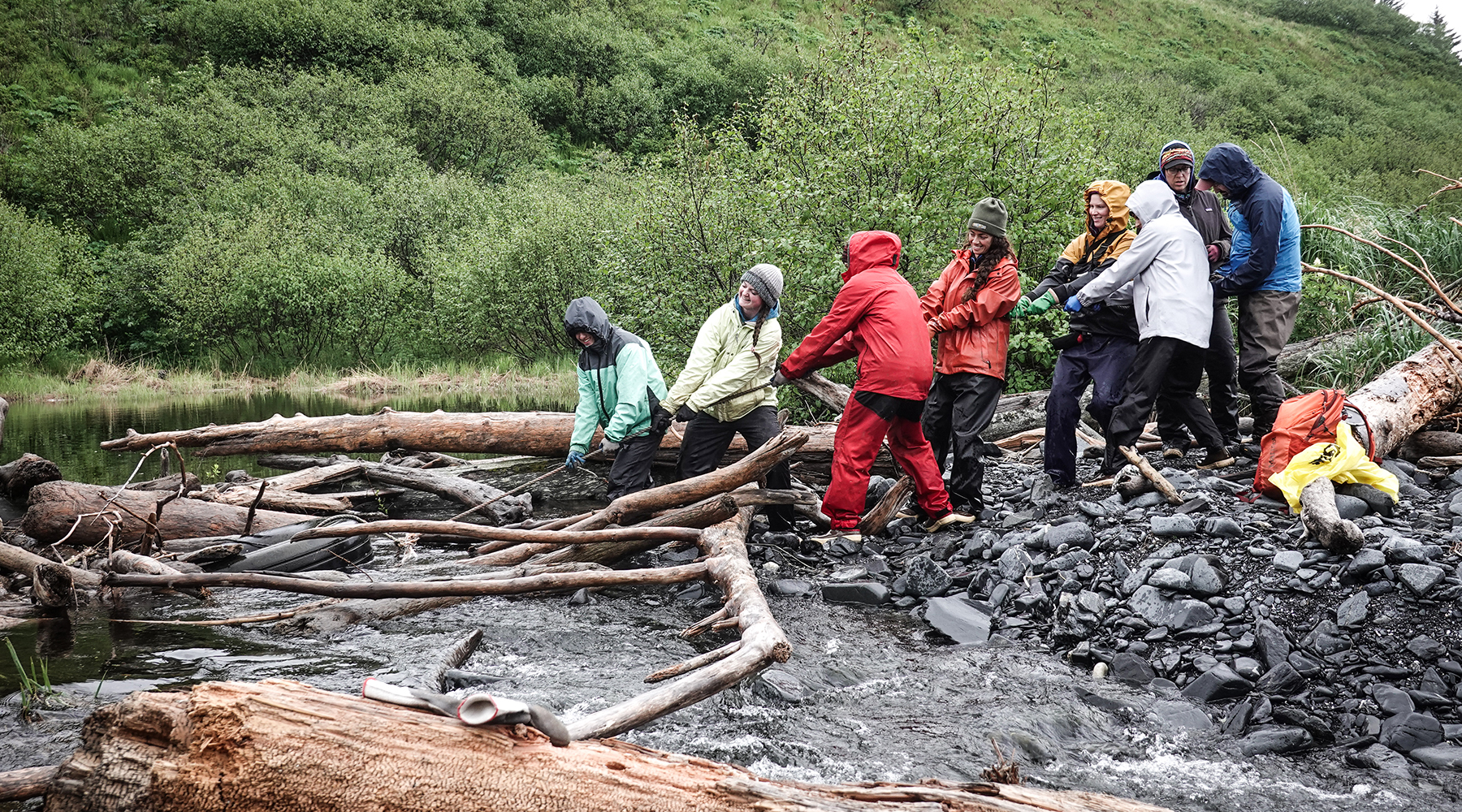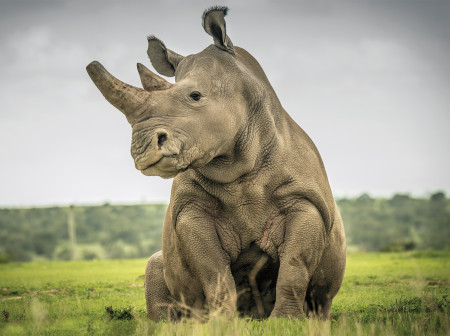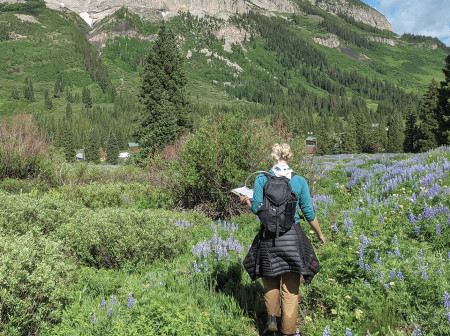It’s easy to leave the world behind in Alaska. The bellowing gush of a spouting humpback whale or the rustle of reeds as a sea otter pokes its head from the water are some of the few sounds that can break the silence.
But step onto any beach in southeastern Alaska, and that serenity is shattered. Layers of trash, ropes and nets interlace through boulders and fallen tree trunks. Countless fragments of tiny, coin-sized debris intermix with the pebbles on the beach. Much of that debris is plastic.
The problem of plastic pollution extends far beyond this coastline — it is a global crisis. But in this corner of the world, Northwestern undergraduate and graduate students joined a research project to help find local solutions to a global crisis.
In May, Northwestern sent six student representatives to join the Ocean Plastics Recovery Project OPR aboard the R/V Steadfast, a 108-foot research vessel. Northwestern students were supported by the Paula M. Trienens Institute for Sustainability and Energy. Dayne Swearer, assistant professor of chemistry, recommended the excursion for Northwestern students. Swearer, a faculty affiliate of the Trienens Institute, connected the students with OPR leaders.
Alongside a student cohort from the University of Massachusetts Lowell, Northwestern students spent a week under the Alaskan early summer sun, exploring the remote islets surrounding the large but sparsely populated Prince of Wales Island.
Together they cleared beaches of 15,000 pounds of marine debris — solid, human-made material that ended up in the ocean. Every year, tens of millions of metric tons of plastic are improperly disposed of and leak into the environment, including into rivers and streams that eventually dump trash into the ocean.
Most recycling research focuses on how to keep products in a closed loop to create what is known as a circular economy, but it can be easy to forget just how much plastic is still slipping through our fingers.
“My work has been on preventing plastic leakage in the first place,” says Ava Dahnke ’24, who studied chemical engineering at Northwestern. “But [in Alaska I saw] the other side [of the problem]: How are we going to remove plastic that’s already in the environment?”
The project, spearheaded by plastics recycling expert Scott Farling and former Coast Guardsman Andy Schroeder, has been removing marine debris from Alaska’s coastline since 2018.
“In this field, you don’t really get to do much fieldwork,” says Logan Fenimore, a fifth-year doctoral candidate in chemical and biological engineering at Northwestern who joined the expedition. His research focuses on upcycling — turning end-of-life plastics into a class of materials called covalent adaptable networks (CANs), which are physically stronger than plastics but can still be recycled.
“Out here, I can see this is an urgent problem — and it’s really easy not to feel that when you live in a city like Chicago,” Fenimore says. “This trip has reminded me why I got into this field in the first place.”





Reader Responses
I'm a retired bio teacher, so A+ for this article! Upcycling and recycling and biodegradable packaging are vital to solving this plasti-trash monster! You have inspired me to try, in my suburban home, to avoid or eliminate tossing plastic in the trash and purchase items in paper or no wrappers.
Keep up the good work! No more plastic bags in New York grocery stores. Who would ever have believed that could happen?
—Janet Byler '71, '72 MA/MS, Huntington, N.Y., via Northwestern Magazine
This was a great piece — well written and did a great job bringing in the different angles of the issue in a way that was understandable. Thank you for covering this topic in such an informative way.
—Julie Cahillane '18 MS, Chicago, via Northwestern Magazine
No one has commented on this page yet.
Submit a Response